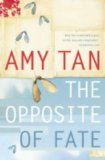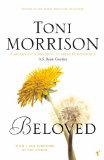Question suggested by Barbara H:
My husband is not an avid reader, and he used to get very frustrated in college when teachers would insist discussing symbolism in a literary work when there didn’t seem to him to be any. He felt that writers often just wrote the story for the story’s sake and other people read symbolism into it.
It does seem like modern fiction just “tells the story” without much symbolism. Is symbolism an older literary device, like excessive description, that is not used much any more? Do you think there was as much symbolism as English teachers seemed to think? What are some examples of symbolism from your reading?
I agree, English teachers often read far more into a book than the author ever intended to put across. I am sometimes baffled by the detail we are supposed to to obtain from single sentences in books. I cannot believe that the author spent that many hours thinking of all of the different connotations that could be gained from their choice of words on each page.
This was confirmed to me on reading the insightful autobiography of Amy Tan, The Opposite of Fate. I love Amy Tan’s book, and they are now frequently studied in American schools. In The Opposite of Fate Amy Tan describes how she was interested to read some of the study guides for her novels, and how they were filled with symbolism which she never intended to be there. I wish I had a copy here to give you some examples, but unfortunately I don’t so you’ll have to read it for yourself! If you’re a fan of Amy Tan, then you will love it, although it will probably lost on you if you don’t know the plots of her books.
Edited to add: Kim kindly found me this quote from The Opposite of Fate:
In page after chilling page, I saw my book had been hacked apart, autopsied, and permanently embalmed into chapter-by-chapter blow-by-blows:plot summaries, geneaology charts, and — ay-ya! — even Chinese horoscopes.
It sums up exactly what I was trying to get across – Thank you Kim!
I recently read the Cliffs Notes study guide for Beloved by Toni Morrison, and was shocked by the number of things you can supposedly draw from the text. For example, the family live at 124 Bluestone Road. Can anyone who has read the book guess as to what this might symbolise?
Apparently it can be taken to symbolise three things:
- The number 124 apparently “emphasizes the incompleteness of the family”. The number 3 is missing from the sequence, just as Sethe’s third child is missing from the family.
- The numbers 1 + 2 + 4 = 7, the number of letters on Beloved’s headstone.
- The joining of Sethe (1) with Halle (2) leads to four children (4) 1 – 2 – 4
I can almost understand that the first example could have been intentional by the author, but the second two just seem a bit far fetched, and even if they were written intentionally by the author, are we, the readers expected to pick up on these things without having to read a study guide?
I would love to know which symbolism Toni Morrison intended to be present in her book. I love reading, but normally only read for the enjoyment of the story. I don’t seek out symbolism, and in most cases it passes me by. For this reason I would love all authors who place symbolism in their novels to write a study guide for their books, so we can clearly see all the clues which were intentionally placed there. If they put the effort of adding symbolism into their books, then wouldn’t they like to have all their hard work appreciated by the every day reader, who doesn’t want to spend hours re-reading each word slowly, searching for hidden meanings?
I urge all authors to summarise the main points they were trying to get across to us in an extra chapter at the end of their book, or on their website. That way we will be able to fully appreciate their message, and not be mislead by the authors of study guides who read far to much into everything!
What do you think? Do you think most study guides are fully of random thoughts which the author did not intend?
Do you ever spot symbolism in books? Do you like it?
I’d love to know your opinions!


